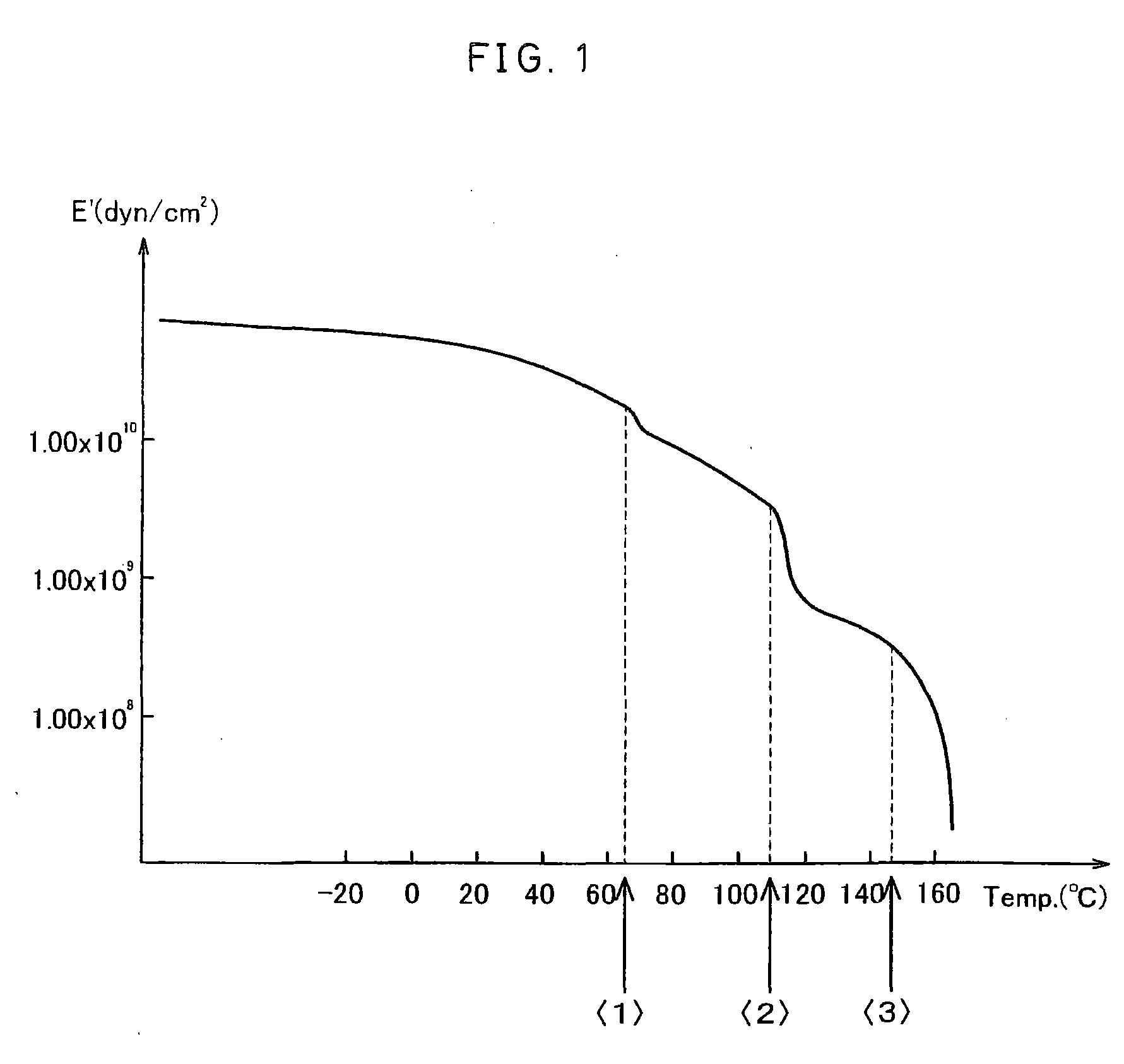Biodegradable laminated sheet
a technology of biodegradable laminated sheets and laminated sheets, which is applied in the direction of packaging foodstuffs, synthetic resin layered products, packaged goods types, etc., can solve the problems of destroying the landscape, and destroying the habitat of marine animals, etc., and achieves the effects of reducing the risk of wrinkles/“bridges”, high heat resistance, and impact resistan
- Summary
- Abstract
- Description
- Claims
- Application Information
AI Technical Summary
Benefits of technology
Problems solved by technology
Method used
Image
Examples
example 1
of the Invention
[0077] Resin 1 in Table 2 as the polylactic acid, and PBS (polybutylene succinate, made by Showa Highpolymer Co., Ltd.: Bionolle 1001, melting point: 111 degrees C.; glass transition temperature: −40 degrees C.) as the biodegradable aliphatic polyester were mixed together at the rate of polylactic acid resin / biodegradable aliphatic polyester=50 / 50 (% by mass). To 100% by mass of this mixture, 10% by mass of talc (made by Nippon Talc Co., Ltd.: Micro Ace L1) as an inorganic filler was added, and the mixture was extruded at 220 degrees C. from a multi-manifold type head of a co-directional twin-screw extruder having a diameter of 25 mm in the form of front and back layers.
[0078] Further, Resin 4 in Table 2 as the polylactic acid, and the abovementioned type of PBS as the biodegradable aliphatic polyester were mixed together at the rate of polylactic acid resin / biodegradable aliphatic polyester=50 / 50 (% by mass). To 100% by mass of this mixture, 10% by mass of the abov...
example 2
of the Invention
[0080] Resin 1 in Table 2 as the polylactic acid, and the abovementioned type of PBS as the biodegradable aliphatic polyester were mixed together at the rate of polylactic acid resin / biodegradable aliphatic polyester=25 / 75 (% by mass). To 100% by mass of this mixture, 20% by mass of the abovementioned type of talc as an inorganic filler was added, and the mixture was extruded at 220 degrees C. from the multi-manifold type head of a co-directional twin-screw extruder having a diameter of 25 mm in the form of front and back layers.
[0081] Further, Resin 4 in Table 2 as the polylactic acid, and the abovementioned type of PBS as the biodegradable aliphatic polyester were mixed together at the rate of polylactic acid resin / biodegradable aliphatic polyester=25 / 75 (% by mass). To 100% by mass of this mixture, 20% by mass of the abovementioned type of talc as an inorganic filler was added, and the mixture was extruded from the multi-manifold type head of a co-directional twi...
example 3
of the Invention
[0083] Resin 1 in Table 2 as the polylactic acid, and the abovementioned type of PBS as the biodegradable aliphatic polyester were mixed together at the rate of polylactic acid resin / biodegradable aliphatic polyester=75 / 25 (% by mass). To 100% by mass of this mixture, 10% by mass of the abovementioned type of talc as an inorganic filler was added, and the mixture was extruded at 220 degrees C. from the multi-manifold type head of a co-directional twin-screw extruder having a diameter of 25 mm in the form of front and back layers.
[0084] Further, Resin 4 in Table 2 as the polylactic acid, and the abovementioned type of PBS as the biodegradable aliphatic polyester were mixed together at the rate of polylactic acid resin / biodegradable aliphatic polyester=75 / 25 (% by mass). To 100% by mass of this mixture, 10% by mass of the abovementioned type of talc as an inorganic filler was added, and the mixture was extruded from the multi-manifold type head of a co-directional twi...
PUM
| Property | Measurement | Unit |
|---|---|---|
| Fraction | aaaaa | aaaaa |
| Fraction | aaaaa | aaaaa |
| Fraction | aaaaa | aaaaa |
Abstract
Description
Claims
Application Information
 Login to View More
Login to View More - R&D
- Intellectual Property
- Life Sciences
- Materials
- Tech Scout
- Unparalleled Data Quality
- Higher Quality Content
- 60% Fewer Hallucinations
Browse by: Latest US Patents, China's latest patents, Technical Efficacy Thesaurus, Application Domain, Technology Topic, Popular Technical Reports.
© 2025 PatSnap. All rights reserved.Legal|Privacy policy|Modern Slavery Act Transparency Statement|Sitemap|About US| Contact US: help@patsnap.com

